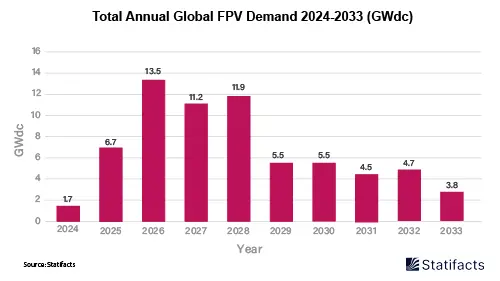
19 June 2025
Floating solar photovoltaics (FPV) are emerging as a major innovation in the renewable energy space, offering an effective solution to land constraints and enabling sustainable power generation on water bodies. According to Wood Mackenzie’s “Floating Solar Landscape 2024” report, cumulative FPV installations are forecast to reach 77GW by 2033, with the Asia Pacific region poised to dominate 81% of the global market. This equates to a projected 57GW of capacity from APAC alone, with nine of the top ten FPV markets expected to emerge from this region. In 2024, global FPV capacity additions are set at 1.7GW, scaling nearly fourfold to 6.7GW in 2025, and peaking at 13.5GW in 2026 before tapering to 5.5GW in 2029.


There are many variations of passages of Lorem Ipsum available, but the majority have suffered alteration in some form
URL TO BE USED AS REFERENCE LINK:
Placeholder content for this accordion, which is intended to demonstrate the .accordion-flush class. This is the first item's
accordion body.
Placeholder content for this accordion, which is intended to demonstrate the .accordion-flush class. This is the second item's
accordion body. Let's imagine this being filled with some actual content.
Placeholder content for this accordion, which is intended to demonstrate the .accordion-flush class. This is the third
item's accordion body. Nothing more exciting happening here in terms of content, but just filling up the space to make it look, at least at
first glance, a bit more representative of how this would look in a real-world application.
Do you still any question?
Feel free to contact us anytime using our contact form or visit our FAQ page.
Your contact to the Infographics Newsroom
